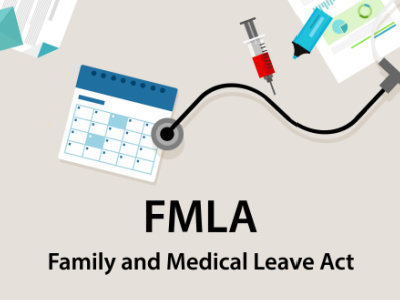We all know the Family and Medical Leave Act (FMLA) provides eligible employees with up to 12 weeks of unpaid medical leave to care for a serious medical condition of the employee or the employee’s family member. Despite the fact the FMLA is celebrating its 30th anniversary this year, employers are still grappling with its proper administration. This article will address common FMLA mishaps and suggest best practices with respect to implementing the FMLA in your workplace.
Recognizing the Need for Leave
I regularly receive calls from clients who want to terminate an employee based on excessive absenteeism. One of my first questions to those clients is to ask whether the absent employee is eligible for FMLA leave and whether the employee’s absences have indicated a need for medical leave.
As a reminder, employees don’t have to specifically request FMLA leave to qualify. Make sure managers and HR are properly trained to recognize when an employee may need FMLA leave, so the employee is provided with the opportunity to exercise that right to leave.
Courts have ruled that if an employee provides enough information to indicate a need for leave (i.e., a serious health condition) and the manager fails to recognize the need for leave, the employer could be liable for an FMLA violation.
Implement a Proper FMLA Policy
While FMLA leave is largely governed by statutory requirements, the Act allows employers to decide whether to calculate the 12 weeks of leave on a calendar year or rolling basis. If the FMLA policy isn’t clear how it is calculated, the employee may choose the calculation method.
Another benefit of a proper FMLA policy is to educate employees on their FMLA rights and how to go about requesting leave. This removes some of the onus on employers to recognize the need for leave.
Finally, the FMLA policy should be clear that employees will be required to exhaust other available paid leave—e.g., paid time off (PTO), paid sick leave, or vacation—concurrently with their FMLA leave. Employees can’t stack these leaves one after the other. The policy should also be clear that employees don’t accrue paid leave while on FMLA leave.
Communication Is Key
Communications between the employer and the employee throughout the FMLA process is paramount to avoiding liability. To start, employees must be informed of their rights under the FMLA. This may include providing the employees with the necessary forms to certify FMLA leave. When providing these forms to the employee, be clear on when the employee must return the forms. Explain to the employee when the leave starts, and if the full 12 weeks appears necessary, when the leave will expire.
If the employee hasn’t returned the forms and the deadline is approaching or just passed, remind the employee of the looming deadline, or give the employee a few more days to return the forms. Don’t be too rigid with respect to this deadline because the employee may have a legitimate need for more time.
As the employee’s leave is set to expire, communicate your expectations with respect to the employee’s return. When is the employee expected to return? Will the employee need a work release prior to returning? What happens if the employee cannot get the work release or fails to return when the leave time expires? All expectations need to be communicated before the leave expires.
Don’t Forget the ADA
Communication during leave will allow an employer to anticipate potential implications under the Americans with Disabilities Act (ADA). The employee may be able to return with certain restrictions, or the employee may need one more week of leave.
Both scenarios implicate the ADA, which requires employers provide qualified employees with a disability with a reasonable accommodation. Employers must consider whether the ADA applies to the situation before outright terminating an employee who is unable to return when FMLA leave expires.
Be Prepared
The Department of Labor (DOL), which enforces the FMLA, has issued an Employer’s Guide to the Family and Medical Leave Act. Employers should familiarize themselves with this guide. Create an FMLA checklist or flow chart on how to handle FMLA leave requests. Finally, if questions arise, consult with experienced employment counsel for guidance.
Jodi R. Bohr is a shareholder with Tiffany & Bosco, P.A., and a contributor to Arizona Employment Law Letter. She practices employment and labor law, with an emphasis on counseling employers on HR matters, litigation, and workplace investigations. She may be reached at jrb@tblaw.com.

